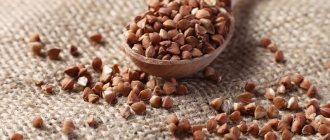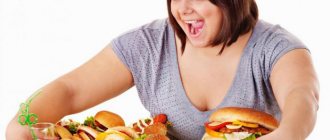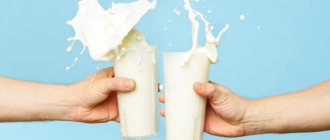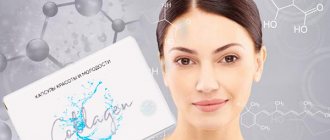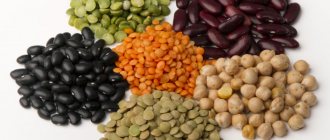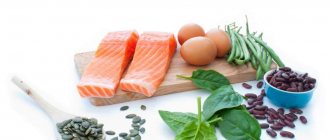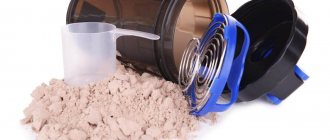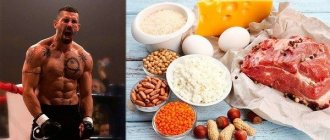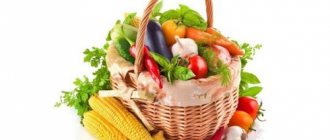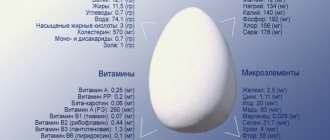Today we will get acquainted with squirrels. It is one of the three macronutrients we need to live a full life. The other two are fats and carbohydrates . You can also find out which foods contain proteins.
What are proteins? Meaning and main functions in the human body
Proteins (protein) are polymers that consist of amino acids. Proteins contain only 22 amino acids. Thanks to the various combinations of 22 amino acids, thousands of different proteins are built.
The importance of proteins is great. After all, it is the main building material of all organisms . As if all the tissues and organs of your body are built from protein bricks - heart, liver, kidneys, pancreas, blood vessels, muscles, hair, nails, etc.
In addition, proteins perform other important functions :
- Catalytic. Proteins are the main component of all known enzymes.
- Hormonal. Most hormones are proteins.
- Protective. A lack of proteins weakens the protective function because the immune system cannot function adequately.
- Transport. Proteins are involved in the transport of oxygen, carbohydrates, fats, some vitamins and microelements.
Harm of drying
Nutritionists always emphasize: you should not perceive drying as one of the weight loss options that are suitable for most people. This diet is used by “athletes” (sorry, bodybuilders and fitness bikinis cannot be called athletes), who often put victory above their own normal well-being.
At the same time, disturbances in well-being during the drying process are not at all uncommon. Due to insufficient consumption of carbohydrates , the body is weakened and exhausted, a person does not have enough energy to perform simple everyday activities, and long, exhausting workouts take away his last strength. Limiting your fat can lead to brittle nails, hair loss and dry skin.
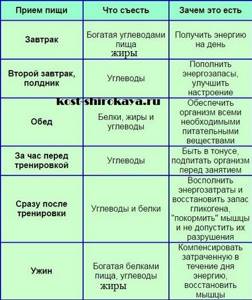
All these protein diets, drying, Atkins diets are complete nonsense. Don’t even think about sitting on them and ruining your health! Read more about the dangers of such diets in the article “What you can and cannot eat”
Cutting and other super protein detoxes and diets are a huge harm to your body, and those trainers who recommend them to you are real criminals ! You can always find questions on forums from inexperienced girls in the style of “I started losing weight, my periods ,” who had read about drying all sorts of fitness bikinis and decided to become like Usmanova.

So we say it again and say it the same number of times: if you are new to sports, then you have NOTHING to dry .
If you do fitness at home, Zumba, bodyflex, yoga, according to the Jillian Michaels program, etc., you have NOTHING to dry.
You need to lose weight, lose weight, pump up, anything, but not dry out. Drying is the lot of professional bodybuilding athletes; a normal, adequate person does not need this mockery of the body and health.
But it is worth noting one important nuance. It is very rare to meet a person who overeats protein (this applies to anyone who wants to lose weight or gain muscle mass). As practice shows, the majority, on the contrary, do not receive the required amount of protein for their body. As we have already said, an ordinary person who does not lead an active lifestyle needs 1-1.2 grams. protein per kg of weight, for an athlete 1.5 - 2g. and more, depending on the type of sport.

These take into account purely digestible protein , and since different proteins have varying digestibility, we can conclude that most of us do not receive the required amount of protein.
Dear, I accelerated my metabolism or myths about “hyped” metabolism
Complete and incomplete proteins
In the process of digesting proteins from food, they are broken down into amino acids . These amino acids are then used to build the proteins the body needs. Thus, it is not just protein that is important to you, but the composition of amino acids.
Amino acids are divided into essential and non-essential . Replaceable ones can be synthesized in the human body. Essential ones , on the contrary, come only with food. For this reason, if there is a shortage of any essential amino acid, a certain protein will not be created, which will ultimately lead to certain consequences.
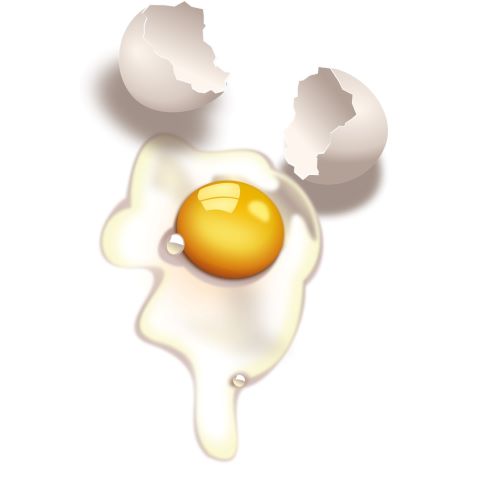
Sources:
- egg whites;
- liver;
- milk and dairy products (except sour cream and butter);
- Fish and seafood;
- meat, poultry;
- soybeans
Proteins that contain only some of the essential amino acids are called incomplete .
Sources:
- grain crops;
- legumes (except soybeans);
- nuts and seeds;
- vegetables.
Where is there more protein: fish or meat?
Meat and fish products contain proteins. They contain complete proteins with essential amino acids, but it is worth noting that meat of different origins has its own quantity and quality of proteins. Their content in beef and lamb reaches 20%. Veal is considered rich in proteins that are easily digestible by the body. Fatty pork contains up to 12% protein, meat tenderloin contains up to 19%. Horse meat and rabbit contain up to 21%, chickens and chickens up to 20%. Chicken meat contains the most complete proteins, their absorption in the body is the easiest, it’s not for nothing that chickens are a dietary product.

Where is there more protein in fish or meat?
Fish contains complete protein, with a full set of essential amino acids. Even in the protein fish itself there are practically no connective formations, which are so abundant in meat, for example, elastin. Which fish has the most protein depends on the variety. Flounder, carp and cod contain up to 16% protein, salmon (salmon) from 16% to 22%, tuna 24%. The lowest content is 7% in grenadier marine fish. A high percentage of protein in caviar - from 30% or more. Fish milk also contains amino acids.
The biological value of fish with a high protein content is close to meat, but the digestibility of fish protein by the body is much higher - 93-98%, the digestibility of meat protein reaches 87-89%. As a conclusion, we can say that fish contains more protein.
Important! To grow muscle tissue, you need to consume at least the daily amount of protein every day.
Fish that is high in protein:
- red caviar (31.5 g of protein per 100 grams of product);
- pollock caviar (27.9 g);
- black granular caviar (26.8 g);
- tuna (24.4 g);
- pink salmon and shrimp (20.5 g);
- salmon (20 g);
- navaga (19.2 years);
- herring (19.1 g);
- chum salmon (19);
- halibut (18.9 g).
Sea fish grenadier and oysters occupy the lowest positions - 7-9 grams.
What foods contain proteins?
Protein foods are divided into animal and vegetable protein.
Animal proteins contain all the amino acids you need. Moreover, you get the required amounts of vitamins B12 and D, calcium, iron, zinc, Omega-3 fatty acids.
On the other hand, red meat, for example, contains saturated fat and cholesterol. Excessive consumption of red meat, according to nutritionists, is associated with increased mortality from cardiovascular diseases and oncology. Therefore, it is recommended to consume red meat no more than three times a week. Frankfurters and sausages are even rarer.
However, there must be moderation in everything! There is no need to give up such products, but there is also no need to eat in unlimited quantities.
And also do not forget about products such as egg whites and dairy products . These are the best sources of animal protein , in terms of biological value.
Protein of plant origin is considered especially valuable. The reason is that in addition to protein, you get fiber, vitamins and microelements, and the most healthy unsaturated fats. At the same time, it is worth remembering that it is difficult to fully replace animal products.
Only soy protein is complete. Therefore, it is better to combine both.
The ideal ratio is 60% animal - 40% plant.
Advice from nutritionists
Nutritionists advise choosing fish over meat. It contains a large amount of Omega-3, which in turn helps protect the body from diseases. When preparing the right diet, you should consider the following recommendations:

Nutritionists advise choosing fish over meat
- a grocery list compiled in advance will help you plan a healthy breakfast, lunch or dinner;
- weight loss is facilitated by eating small portions; you should eat 5-6 times a day;
- drinking enough clean water helps cleanse the body (about 2 liters per day);
- preference should be given to fresh fruits and vegetables rather than juices from packages;
- Don’t skip breakfast, this will help you avoid overeating throughout the day.
Fish is a very valuable food product. It helps to make the diet varied and healthy, since it contains many substances necessary for human life.
List of foods containing protein
| Food product | Proteins (g) per 100 g of product |
| Seafood | |
| Red caviar | 31,6 |
| Pink salmon | 23 |
| Salmon | 20 |
| Halibut | 20 |
| Shrimps | 18,7 |
| Perch | 18,5 |
| Saira in oil | 18,4 |
| Herring | 18 |
| Squid | 18 |
| Navaga, cod | 17,8 |
| Pollock | 17,7 |
| Flounder | 17,5 |
| Sprats (canned) | 17,3 |
| Sturgeon | 15,8 |
| Meat products | |
| Boiled chicken | 25 |
| Chicken breast | 23 |
| Chicken liver | 22 |
| Chicken | 20,5 |
| Beef | 21 |
| Beef | 21 |
| Pork | 20,5 |
| Pork liver | 20,2 |
| Mutton | 20 |
| Beef liver | 19,8 |
| Beef stew | 16,7 |
| Pork stew | 15 |
| Eggs | |
| Chicken egg | 12,9 |
| Quail egg | 11,9 |
| Dairy | |
| Parmesan cheese | 35 |
| Dutch cheese | 26 |
| Whole milk powder | 25 |
| Russian cheese | 23 |
| Low-fat cottage cheese | 18 |
| Fat cottage cheese | 14 |
| Processed cheese | 12 |
| Condensed milk with sugar | 7,2 |
| Yogurt | 3-4,5 |
| Kefir | 3,3 |
| Whole milk | 3,3 |
| Pasteurized milk | 3 |
| Sour cream 10% fat | 3 |
| Cream 10% fat | 3 |
| Cream 20% fat | 2,8 |
| Sour cream 20% fat | 2,8 |
| Nuts and legumes | |
| Soy flour | 37 |
| Soybeans | 36 |
| Peanut | 26,2 |
| Pumpkin seeds | 24 |
| Lentils | 23,5 |
| Sunflower seeds | 22,5 |
| Beans | 21 |
| Peas | 21 |
| Pistachios | 20 |
| Chickpeas | 20 |
| Almond | 18,8 |
| Cashew | 18,5 |
| Walnut | 16,2 |
| Hazelnut | 15 |
| Brazilian nut | 14,3 |
| Pine nut | 13,8 |
| Pecan | 9,2 |
| Cereals | |
| Wheat bran | 15 |
| Oat flour | 14 |
| Hercules | 13 |
| Couscous | 13 |
| Buckwheat | 12,5 |
| Wheat groats | 12,5 |
| Bulgur | 12 |
| Millet | 12 |
| Oat groats | 12 |
| Semolina | 11 |
| Buckwheat flour | 11 |
| Wheat flour 1st grade | 10,6 |
| Premium wheat flour | 10 |
| Barley grits | 10 |
| Pearl barley | 9 |
| Corn (whole kernels) | 8,5 |
| Corn flour | 8 |
| Rye grain bread | 8,5 |
| Wheat bread (white) | 7,6 |
| Brown rice | 7,5 |
| White rice | 7 |
| Boiled white rice | 2 |
| Vegetables | |
| Green peas | 5 |
| Brussels sprouts | 4,5 |
| Watercress | 4,2 |
| Broccoli | 3 |
| Spinach | 2,8 |
| Cauliflower | 2,5 |
Buckwheat
If we talk about which porridge has the most protein, then buckwheat immediately comes to mind. Tasty, crumbly, satisfying, it is a favorite side dish for many. This may be a discovery for you, but buckwheat is not a cereal, like most cereals. This is a herbaceous plant, the closest relative of which is sorrel. The calorie content of this product is minimal, but the benefits the body receives are simply colossal. There are only 320 kcal per 100 g.
This is the incomparable leader among cereals in terms of nutritional value. A large number of diets are based on its use. Most often, when deciding to lose weight, people begin to pay close attention to the protein in their food. The table will help you create an optimal diet that will enable you to achieve your ideal.
Buckwheat is suitable not only for those who watch their figure. This is the optimal animal protein substitute for vegetarians. A tasty and healthy product allows you to build a healthy diet. In buckwheat, the volume of vegetable protein reaches 18%. This is a very good indicator. In addition, it is rich in potassium and magnesium.
People call this cereal a mini-pharmacy. You can talk about her alone endlessly. But it is especially often interested in those for whom protein in food is important (the table provides a comparative description so that you can see how its content differs in different cereals).
Among other things, buckwheat saves the body from intoxication and poisoning. It removes toxins and reduces the risk of cardiovascular diseases. The list can go on and on, buckwheat helps with metabolic disorders and obesity, as well as vitamin deficiency. This is not surprising because it is rich in B vitamins, phosphorus, calcium, manganese and potassium, iron and magnesium.
Daily protein intake
You all constantly need amino acids. They fulfill their function and disintegrate. Part of it enters the bloodstream and is used again, the other part is disposed of.
Proteins are vital. Therefore, every adult should consume at least 40–50 g of protein per day.
In fact, 40-50 g is the minimum intake that is necessary for your life.
Your needs depend on your caloric intake . Calorie content, in turn, depends on gender, weight, age, and physical activity. Having calculated your individual calorie content and taking into account that 1 g of protein has a calorie content of 4 kcal, your norm is calculated. Therefore, to say that each person needs 1, - 1.5 or 2 g of protein per 1 kg of weight per day is incorrect.
The approximate daily intake is shown in the table below in grams.
As an example, calculations were carried out for a man and a woman of 30 years old, of average height with low activity.
In the case of weight gain, average activity was taken (3 workouts per week).
Depending on your weight and gender, you can use the data from the table as the basis for your diet. I repeat, the figure is approximate. Such calculations are carried out according to certain formulas, according to your age, height, weight, activity and your goals.
| 50 -55 kg | 55-60 kg | 60-65 kg | 65-70 kg | 75-80 kg | 80-85 kg | |
| Men | ||||||
| Weight loss | 145 | 150 | 155 | 160 | 165 | 170 |
| Weight maintenance | 136 | 141 | 145 | 150 | 155 | 160 |
| Muscle gain | 200 | 210 | 220 | 230 | 240 | 250 |
| Women | ||||||
| Weight loss | 122 | 127 | 132 | 137 | 142 | 147 |
| Weight maintenance | 116 | 120 | 124 | 128 | 132 | 136 |
| Muscle gain | 170 | 177 | 184 | 191 | 198 | 205 |
Here we mean not only animal, but also plant protein. This means take into account not only meat, eggs, but also bread, dairy products, cereals, vegetables, fruits, etc. Therefore, whatever your goals, most likely you will not have to make a huge effort in order to achieve your norm .
When protein needs increase
- With increasing physical activity (hard work, training to increase muscle mass, etc.).
- During illness, and during recovery, as well as during stress.
- During intensive growth and development.
- During pregnancy and breastfeeding.
- During the cold season.
When protein requirements decrease
- In the warm season.
- With age. The older a person is, the less protein he needs.
Signs of protein deficiency
- Fatigue, weakness, fatigue.
- Decreased muscle volume.
- Growth retardation in children.
- Dry, flabby skin.
- Dry, dull, brittle hair.
- Decreased resistance to various infections.
- Anemia.
- Swelling.
- Violation of the functions of the body systems: cardiovascular, nervous, circulatory, gastrointestinal tract, etc.
Causes of deficiency
- Lack of protein in food.
- An unbalanced diet due to eating only plant foods, fasting or vegetarianism. You can eat protein foods, but still not get the full range of essential amino acids.
- Gastrointestinal diseases.
- Malabsorption.
- Hormone deficiency.
Excess protein in the body
Chronic consumption of large amounts of protein can cause:
- gastrointestinal, renal and vascular disorders;
- decreased natural immunity, which leads to infectious diseases;
- risk factor for cancer.
Instructions
Fish is an irreplaceable source of complete protein, which in biological value is close to the protein of meat products, but at the same time has a higher degree of digestibility. Protein contains essential amino acids, some of which the body cannot synthesize, and the only source of these amino acids is protein obtained from food.
Athletes and people on protein diets who need food with a large amount of protein with a low calorie content should give preference to tuna. So, 100 g of this valuable fish contains on average about 20-25 g of complete protein, which is 50% of the daily value. Some types of this fish - yellowfin, white albacore tuna and deep sea bluefin tuna contain almost 30 grams of protein. In second place after tuna in terms of protein content are halibut, anchovies, lamprey and tilapia - approximately 26-28 g. Pollock is slightly behind them - 19 g and mullet - 18.5 g. Mullet protein contains the essential amino acid methionine, which is not found even in protein of meat products.
Mackerel (mackerel) is slightly behind pollock in terms of protein content - this fish, which in ancient times was called the “elixir of youth,” contains about 18 g of protein. The amount of protein in pike is at the same level. Almost on par with sea fish in terms of protein content are the noble freshwater sturgeon families: sturgeon, stellate sturgeon, sterlet, thorn, and beluga. The protein content in 100 g of this fish reaches 16.5 g, but you need to remember that not only meat, but also caviar and milt can be an important source of protein. Moreover, the amount of protein in caviar exceeds the amount of protein in fish meat, and in milk it is equal to this value. Salmon fish and their caviar are an equally valuable source of protein. Thus, rainbow trout, chum salmon, pink salmon, salmon, omul, chinook salmon, whitefish, grayling, taimen, and sockeye salmon can contain from 16 to 20 g of protein. Salmon has the largest amount of protein - about 20 g. A hundred-gram piece of salmon provides the human body with half the daily requirement of protein.
Vegetarianism and protein
Each person makes his own choice about how and what to eat. Vegetarianism has been gaining popularity in recent years. Increasingly, due to moral and ethical convictions, people refuse meat, or animal food in general.
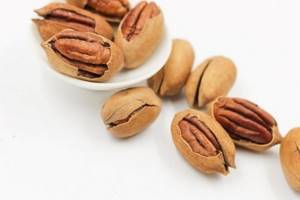
They need to plan their diet very carefully to provide themselves with the necessary amount of essential amino acids. With the right approach, you can replace animal protein with plant protein.
For example, cereals contain little of the amino acid lysine and a lot of the amino acid methionine. Beans, on the contrary, are high in lysine and low in methionine. So consume both regularly. Although not necessarily in one meal.
You are recommended to eat a variety of plant foods: cereals, legumes (beans, lentils, peas and chickpeas), nuts, seeds, broccoli, etc.
Read more: Vegetarianism. How to stay healthy? Advice from professionals
What does protein go with?
In addition to having the foods the body needs on the table, it is also important to combine them correctly, because to digest different foods, two types of enzymes are secreted in the stomach: acidic and alkaline. When acting together, they simply neutralize each other, inhibiting digestive processes. This can cause heaviness in the intestines and bloating, as well as drowsiness and weakness after eating.
Protein products are digested under the influence of pepsin, an acidic enzyme, so you should not add carbohydrates that decompose under the influence of alkali to them. The best combination, from the point of view of nutritionists, is the consumption of foods rich in both plant and animal proteins with leafy greens and vegetables, and containing a lot of water: asparagus, cabbage, peppers, tomatoes, cucumbers.
Protein diet for weight loss
Such diets are popular and have already proven their effectiveness.
Many weight loss diets are based on the principles of protein nutrition. For example, the Dukan , the Kremlin diet , etc.
Among the advantages of such diets are:
- rapid weight loss;
- losing weight without hunger, you are always full;
- no need to count calories and limit portions.
At the same time, there are also disadvantages:
- Excess protein in the diet increases the load on all organs and systems of the body, which can lead to serious consequences.
Benefit
- Relatively low calorie content .
- Low glycemic index.
- Feeling full.
Make it a rule to eat protein foods - meat of lean poultry and animals: turkey, chicken, lean beef, veal, rabbit. You don’t have to eat just chicken breast without salt; juicy chicken legs won’t make you sick, believe me, if you boil or bake in the oven without oil. This way you will get essential amino acids and enjoy food.
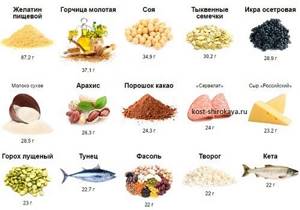
Table of protein products
When eating foods rich in proteins, a sharp rise in blood sugar and the release of large amounts of insulin do not occur. Although once again we remind you that this does not matter for weight loss (read in detail in the article “Flexible diet or rubber diet? Complex and simple carbohydrates”
Proteins take longer to digest than carbohydrates, so you feel full longer.
Where to get it from

Surely someone has heard the combination “protein-free diet”. It is very conditional and implies only a critical reduction in the amount of protein consumed with food.
Otherwise, such a method would have to look like this: I ate a vitamin powder, a capsule with carbohydrates, took a bite of a microcellulose tablet - after a couple of weeks I got a hole, about two meters per meter, the size of a coffin. Protein starvation can quickly lead to disastrous results.
What foods contain protein:
- meat;
- fish;
- seafood;
- eggs;
- dairy products;
- legumes;
- nuts;
- caviar;
In the photo there are especially valuable sources:
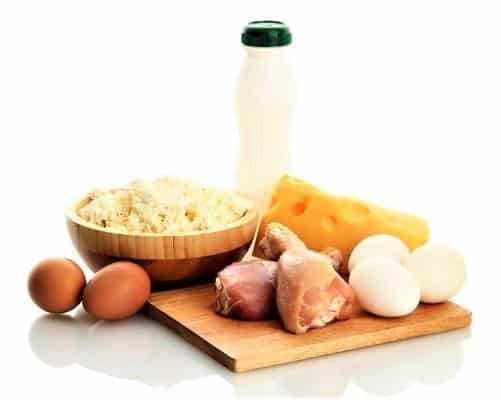
An important question: in what percentages are amino acids included in this or that food? This will determine whether you should eat beef or shrimp today. This is an individual need for each organism. And it will change every day.
